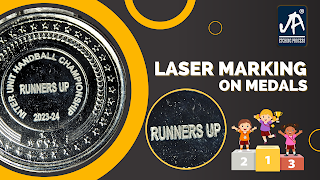Precision Unveiled: Exploring Ball Mould Perfection through Chemical Etching Techniques
In the intricate world of manufacturing, precision is a non-negotiable factor, especially when it comes to the production of ball moulds. The quest for perfection has led to the exploration and implementation of advanced techniques, with chemical etching at the forefront. This process, coupled with other techniques like E coating and mould polishing, unveils a new era of ball mould perfection.
Chemical Etching Process: A Symphony of Precision
At the heart of achieving precision in ball moulds lies the
intricate dance of the chemical
etching process. This subtractive manufacturing technique involves
selectively removing material from the surface of the mould using chemicals.
The result is a meticulously controlled surface texture that enhances the
functionality and performance of the ball mould.
One of the key advantages of chemical etching is its ability
to create micro-patterns with unparalleled precision. These micro-textures
influence various aspects of ball mould performance, including friction
reduction, improved lubrication, and enhanced release properties. The level of
detail achievable with chemical etching ensures uniformity and repeatability in
the manufacturing process, contributing to the overall perfection of ball
moulds.
E Coating: Elevating Protection and Durability
In the pursuit of perfection, E coating emerges as a crucial
ally to chemical etching. Also known as electrodeposition coating, E coating
involves immersing the ball mould in a bath of electrically charged paint
particles. The particles are attracted to the surface of the mould, creating a
durable and uniform coating.
E coating not only enhances the aesthetic appeal of ball
moulds but also provides a protective layer that improves corrosion resistance.
This additional layer of defense ensures that the precision achieved through
chemical etching is preserved over time, contributing to the longevity and
durability of the ball mould.
Mould Polishing: The Final Touch of Refinement
Completing the triumvirate of techniques for perfecting ball
moulds is mould polishing. While chemical etching and E coating lay the
foundation, mould polishing adds the final touch of refinement. This mechanical
finishing process involves the removal of any remaining imperfections on the
mould surface, ensuring a smooth and flawless finish.
Mould
polishing not only enhances the visual appeal of the ball mould but also
plays a crucial role in functionality. A polished surface reduces friction,
improves release properties, and contributes to the overall precision of the
ball mould. The combination of chemical etching, E coating, and mould polishing
results in a ball mould that not only meets but exceeds the stringent standards
of precision demanded by the industry.
The Impact on Ball Mould Perfection:
Enhanced Precision: The chemical etching process, with its
micro-textures, ensures a level of precision that elevates the performance of
ball moulds.
Longevity and Durability: E coating provides a protective
layer, preserving the precision achieved through chemical etching and enhancing
the mould's resistance to corrosion.
Aesthetic Excellence: Mould polishing adds the finishing
touch, creating a visually appealing and flawless surface on the ball mould.
Improved Functionality: The synergy of these techniques
results in ball moulds with reduced friction, improved release properties, and
superior overall functionality
Conclusion:
In the realm of ball moulds, precision is not just a goal;
it's a journey that involves the mastery of advanced techniques. Chemical
etching, E coating, and mould polishing stand as pillars in this journey,
collectively unveiling the perfection hidden within every ball mould. As
manufacturers continue to push the boundaries of precision, these techniques
pave the way for a new standard of excellence in ball mould production.
.PNG)


Comments
Post a Comment